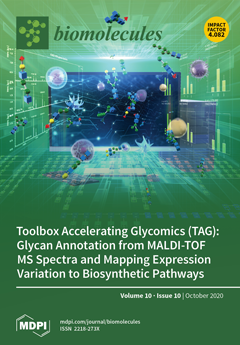HMGB1 and HMGB2 proteins are abundantly expressed in human embryonic stem cells
(hESCs) and hESC-derived progenitor cells (neuroectodermal cells, hNECs), though their functional
roles in pluripotency and the mechanisms underlying their dierentiation in response to the anticancer
drug etoposide remain to be elucidated.
[...] Read more.
HMGB1 and HMGB2 proteins are abundantly expressed in human embryonic stem cells
(hESCs) and hESC-derived progenitor cells (neuroectodermal cells, hNECs), though their functional
roles in pluripotency and the mechanisms underlying their dierentiation in response to the anticancer
drug etoposide remain to be elucidated. Here, we show that HMGB1 and/or HMGB2 knockdown
(KD) by shRNA in hESCs did not aect the cell stemness/pluripotency regardless of etoposide
treatments, while in hESC-derived neuroectodermal cells, treatment resulted in dierential eects on
cell survival and the generation of rosette structures. The objective of this work was to determine
whether HMGB1/2 proteins could modulate the sensitivity of hESCs and hESC-derived progenitor
cells (hNECs) to etoposide. We observed that HMGB1 KD knockdown (KD) and, to a lesser extent,
HMGB2 KD enhanced the sensitivity of hESCs to etoposide. Enhanced accumulation of 53BP1 on
telomeres was detected by confocal microscopy in both untreated and etoposide-treated HMGB1
KD hESCs and hNECs, indicating that the loss of HMGB1 could destabilize telomeres. On the other
hand, decreased accumulation of 53BP1 on telomeres in etoposide-treated HMGB2 KD hESCs
(but not in HMGB2 KD hNECs) suggested that the loss of HMGB2 promoted the stability of telomeres.
Etoposide treatment of hESCs resulted in a significant enhancement of telomerase activity, with
the highest increase observed in the HMGB2 KD cells. Interestingly, no changes in telomerase activity
were found in etoposide-treated control hNECs, but HMGB2 KD (unlike HMGB1 KD) markedly
decreased telomerase activity in these cells. Changes in telomerase activity in the etoposide-treated
HMGB2 KD hESCs or hNECs coincided with the appearance of DNA damage markers and could
already be observed before the onset of apoptosis. Collectively, we have demonstrated that HMGB1
or HMGB2 dierentially modulate the impact of etoposide treatment on human embryonic stem cells
and their progenitor cells, suggesting possible strategies for the enhancement of the ecacy of this
anticancer drug.
Full article






